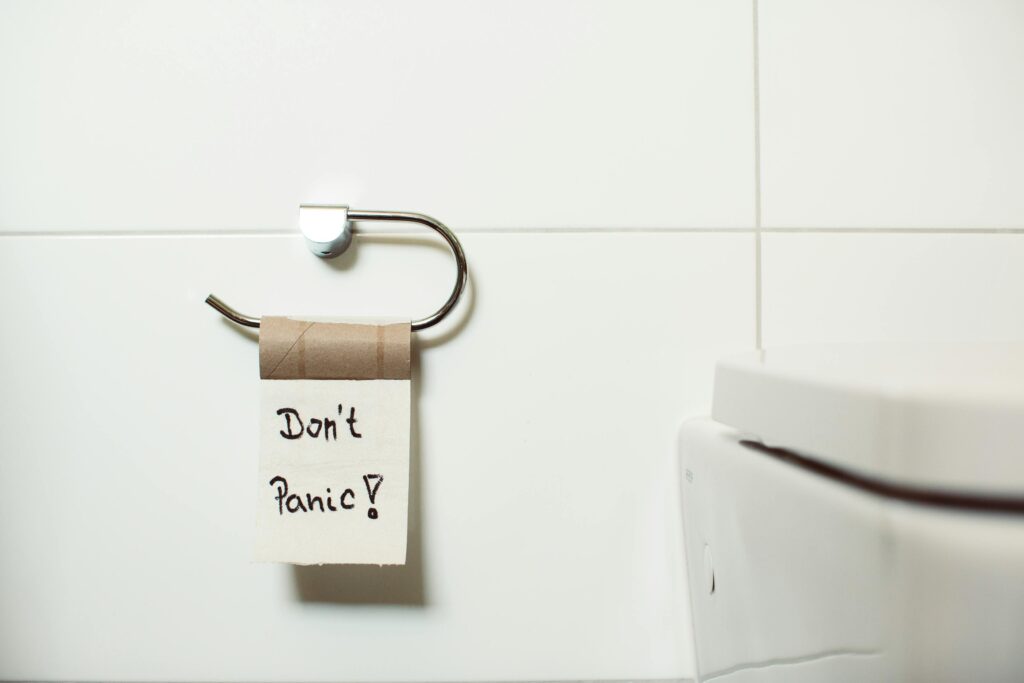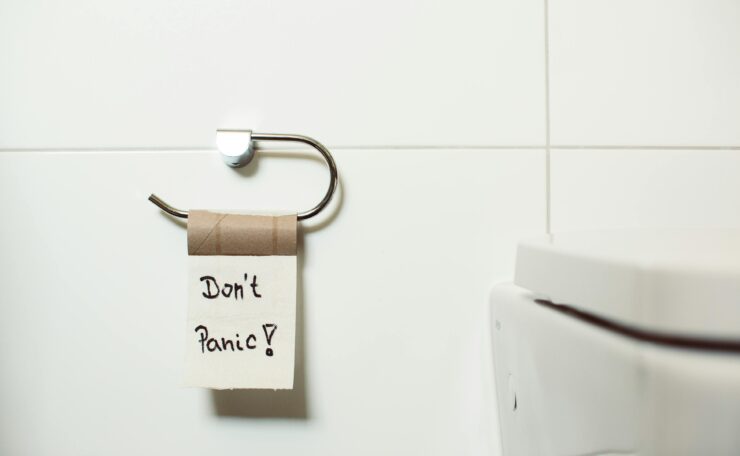Panic disorder is a debilitating condition that affects millions of people worldwide. It is characterized by recurrent, unexpected panic attacks—sudden episodes of intense fear or discomfort that peak within minutes. These attacks can include physical symptoms such as a racing heart, sweating, trembling, shortness of breath, and feelings of impending doom. While panic disorder can feel overwhelming, it is possible to overcome it with the right tools, strategies, and support.
In this article, we will explore practical steps to manage and overcome panic disorder, focusing on building resilience, seeking professional help, and cultivating a lifestyle that promotes mental well-being.

Understanding Panic Disorder
Before delving into the strategies to overcome panic disorder, it’s essential to understand its nature. Panic disorder often stems from a combination of genetic, biological, psychological, and environmental factors. People with a family history of anxiety or other mental health conditions may be more susceptible.
The hallmark of panic disorder is the fear of having another panic attack, which can lead to avoidance behaviors and increased anxiety. This fear creates a cycle where the anticipation of an attack triggers more anxiety, ultimately making the disorder harder to manage. Breaking this cycle is key to recovery.
Step 1: Seek Professional Help
1.1. Diagnosis
If you suspect you have panic disorder, consult a healthcare professional for an accurate diagnosis. A doctor or therapist can evaluate your symptoms, rule out other medical conditions, and create a tailored treatment plan.
1.2. Therapy Options
Cognitive Behavioral Therapy (CBT) is one of the most effective treatments for panic disorder. It focuses on identifying and challenging distorted thought patterns that fuel panic attacks. Techniques such as exposure therapy, where you gradually face feared situations, can help desensitize you to triggers.
1.3. Medication
In some cases, medication may be recommended to manage symptoms. Antidepressants, such as selective serotonin reuptake inhibitors (SSRIs), and anti-anxiety medications, like benzodiazepines, can provide relief. Always consult your healthcare provider about the benefits and potential side effects of medication.
Step 2: Understand Your Triggers
Keeping a journal to track your panic attacks can help you identify triggers. Note the time, location, thoughts, and physical sensations during each episode. Patterns may emerge, revealing specific situations, environments, or thoughts that exacerbate your anxiety.
For example, some common triggers include:
- Stressful life events
- Certain social situations
- Physical sensations resembling anxiety (e.g., a racing heart after exercise)
Once you’re aware of your triggers, you can develop strategies to address them.
Step 3: Learn Breathing Techniques
Panic attacks often cause hyperventilation, which can intensify feelings of fear and physical discomfort. Learning how to regulate your breathing can help you regain control during an attack.
3.1. Diaphragmatic Breathing
- Sit or lie down in a comfortable position.
- Place one hand on your chest and the other on your stomach.
- Inhale deeply through your nose, ensuring your stomach rises while your chest remains still.
- Exhale slowly through your mouth, feeling your stomach fall.
- Repeat for several minutes.
3.2. Box Breathing
- Inhale for four counts.
- Hold your breath for four counts.
- Exhale for four counts.
- Hold your breath again for four counts.
- Repeat until you feel calmer.
Regular practice of these techniques can make them more effective in moments of acute anxiety.
Step 4: Challenge Negative Thoughts
Panic disorder often involves catastrophic thinking—believing the worst-case scenario will occur. For instance, you might interpret a rapid heartbeat as a sign of a heart attack. Learning to challenge these thoughts can reduce their power.
4.1. Thought Replacement
When a negative thought arises, ask yourself:
- Is this thought based on facts or assumptions?
- What evidence supports or contradicts it?
- What is a more balanced perspective?
For example, replace “I’m going to faint” with “I feel lightheaded, but it will pass.”
4.2. Affirmations
Using affirmations can also help reframe your mindset. Repeat phrases like:
- “This is temporary; I will get through it.”
- “I am safe, even if I feel scared.”
Step 5: Practice Mindfulness
Mindfulness involves staying present and fully experiencing the moment without judgment. It can help ground you during a panic attack and reduce overall anxiety.
5.1. Grounding Exercises
- 5-4-3-2-1 Technique: Identify 5 things you see, 4 you can touch, 3 you hear, 2 you smell, and 1 you taste.
- Progressive Muscle Relaxation: Tense and release each muscle group, starting from your toes and working up to your head.
5.2. Meditation
Even a few minutes of daily meditation can improve emotional regulation. Apps like Calm or Headspace offer guided meditations tailored to anxiety.
Step 6: Adopt a Healthy Lifestyle
A balanced lifestyle can significantly impact your mental health. Small changes in daily habits can reduce anxiety and build resilience.
6.1. Regular Exercise
Physical activity releases endorphins, which act as natural mood boosters. Activities like walking, yoga, or swimming can be particularly effective for managing anxiety.
6.2. Balanced Diet
Avoid excessive caffeine, alcohol, and sugary foods, which can exacerbate anxiety symptoms. Instead, focus on a diet rich in whole grains, lean proteins, fruits, and vegetables.
6.3. Sleep Hygiene
Poor sleep can worsen anxiety. Create a calming bedtime routine, limit screen time before bed, and maintain a consistent sleep schedule.
Step 7: Build a Support System
Isolation can amplify feelings of anxiety. Surround yourself with supportive friends and family members who understand what you’re going through.
7.1. Join a Support Group
Connecting with others who have experienced panic disorder can provide comfort and practical advice. Many communities offer in-person or online support groups.
7.2. Communicate Your Needs
Be open with your loved ones about how they can support you during a panic attack. For example, you might ask them to sit with you quietly or remind you to practice your breathing exercises.
Step 8: Set Realistic Goals
Recovery from panic disorder is a gradual process. Set small, achievable goals to build confidence and track your progress.
For example:
- Week 1: Practice breathing exercises daily.
- Week 2: Attend a therapy session or join a support group.
- Week 3: Face a mild trigger with coping strategies in place.
Celebrate your achievements, no matter how small they seem.
Step 9: Focus on Long-Term Growth
While overcoming panic disorder takes time and effort, it can lead to personal growth and resilience. Many people find that facing their anxiety helps them develop greater self-awareness, empathy, and strength.
9.1. Keep Learning
Books, podcasts, and courses on anxiety management can provide additional insights. Some recommended resources include:
- “The Anxiety and Phobia Workbook” by Edmund J. Bourne
- “Dare: The New Way to End Anxiety and Stop Panic Attacks” by Barry McDonagh
9.2. Reflect on Your Journey
Journaling about your progress can help you recognize patterns, track improvements, and stay motivated.
Final Thoughts
Overcoming panic disorder is not a linear journey. There will be setbacks, but each step forward brings you closer to a life free from the constraints of anxiety. By seeking professional help, understanding your triggers, and cultivating healthy habits, you can regain control and build a fulfilling life.
Remember, you are not alone in this journey. With persistence, patience, and the right strategies, overcoming panic disorder is entirely possible. Reach out, take the first step, and embrace the process of growth.



